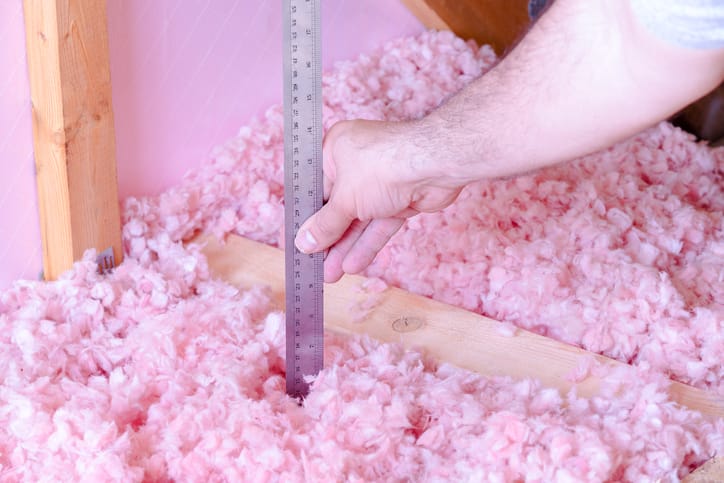The blown-in insulation is one of the best forms of insulation material for your attic and smart use of this material will help your home achieve a great and effective R-value. A vast majority of production builders prefer to use batt insulation for the walls of the homes that they construct, however, there is a strong case that needs to be made for blown-in fibreglass. The amount of insulation that is recommended for your home is dependent on where you live, but here are a few guidelines.
Attic Insulation
For homes that are situated in cold climates, homeowners need to ensure that they have a minimum of R-49 in their attics, this is equivalent to about 16 inches of fibreglass insulation. If your home is in a warmer climate, you require an R-38 or higher, or about 12’ more.
Wall Insulation
While your wall insulation may be limited by the width of the studs, different materials will provide higher or lower R-values. Fibreglass batts for the standard 2×4 walls are available in low medium and high-density type of products that normally range from R-11 to R-15. When using sprayed foam in the same wall cavity it can range from an R-14 to an R-28 this, however, will entirely depend on the product that you are using for this project.
Floor Insulation
While there are additional considerations to make such as moisture problems and venting to be considered when insulating your underfloor, professionals recommend that you use an R-25 rating if you live in a cold climate area, and an R-11 if you are in the warmer parts of the country.
Blown in insulation makes it easy to earn a higher-grade rating when it comes to R-Values. This is because it achieves nominal R-value when it fills in the cavities which include the hard to reach in areas voids and gaps. However, it’s hard to see a home that has batt insulation that doesn’t fall short. This is because installers tend not to take enough time to be careful when they are cutting and fitting the batts around pipes, wires and other obstructions. This means you will often not get enough insulation in the ard to reach spots.
A lot of builders are already using blown insulation for the ceiling plane that is between the conditioned space and the conditioned attic. If your home has a complex roofline, then your attic will definitely have a lot of hard to reach areas, but even the simplest attic will still include recessed lights, electrical wiring, exhaust fans and other obstructions that are difficult to get insulation around. Blown in insulation is far much faster and effective than batt insulation, and this is why you need to consider it for your walls as well.
When using blown-in fibreglass insulation, the installer can easily fill in the gaps and voids that are around obstacles. And while material costs tend to be slightly higher than with batts, the fact that you will be able to insulate your house more in a day achieving a constant level of performance makes the costs comparable. There’s also a lot of increase benefits from an acoustical perspective; this is due to the uniform and increased density of a quality application.
Its possible to degrade the performance by not using the properly calibrated equipment. However, a skilled professional installer will know how to adjust the equipment so that you can deliver the full R-value. This will also make sure that your insulation flows around the obstructions.
It is recommended that you seek to consult from a professional insulation company before embarking on this project, they will be in a better position to advise you on the best material, R-values that are suitable with your location and attic design.

